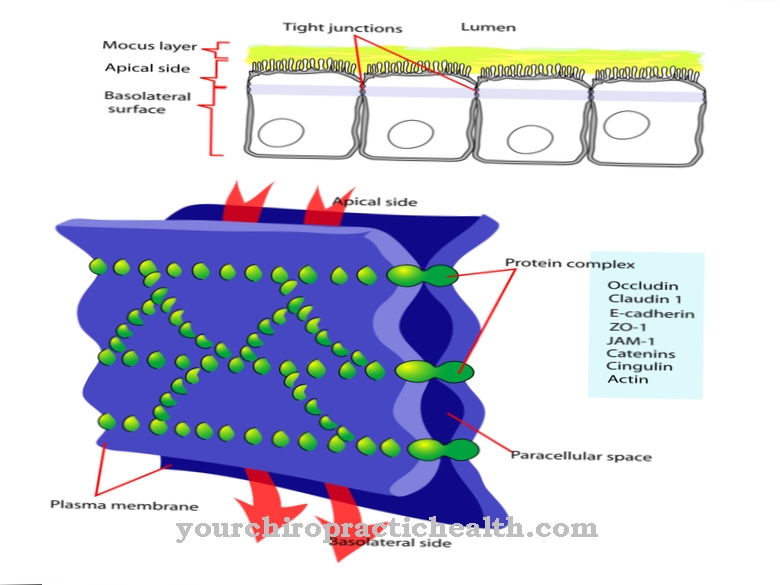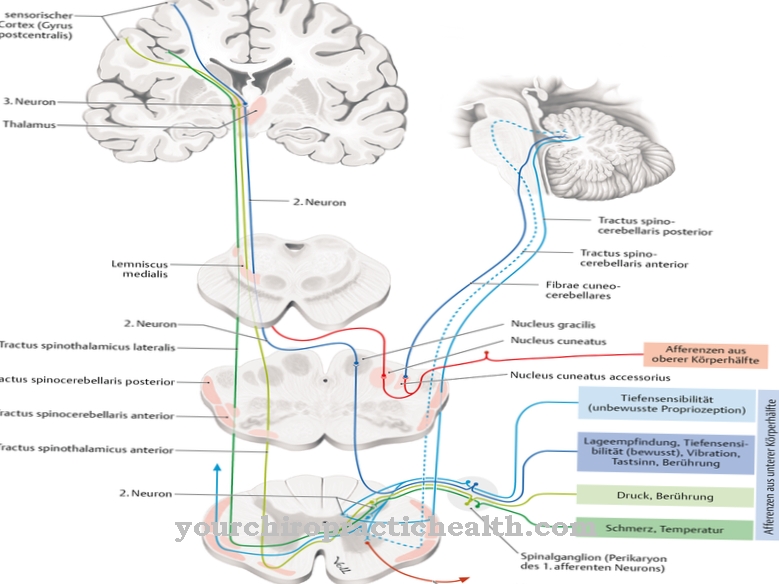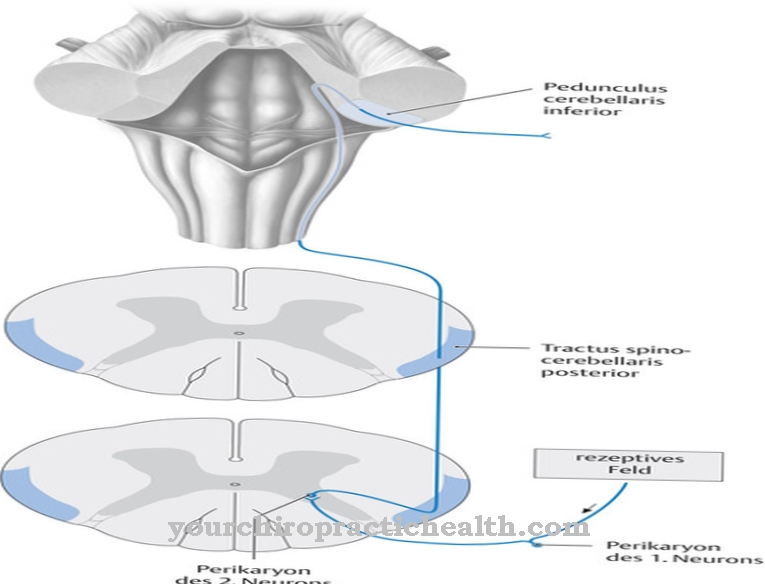Of the Bursa (synovial bursa) is a small connective tissue sac that occurs in many parts of the body and is filled with synovia (joint fluid). It serves to act as a protective buffer between hard bones and soft tissue such as ligaments, tendons or skin. The most common clinical picture is bursitis (bursitis), which is usually caused by overuse and shows the classic signs of inflammation such as pain, swelling, overheating and redness.
What are bursa?
In medical terminology, the bursa is known as the synovial bursa. The Latin word "bursa" (translated: bag, pouch) indicates the appearance of the bursa in the form of a small, in a healthy state, flat pouch.
This is filled with synovial fluid, which is also known colloquially as synovial fluid. Bursae are always found in the body where the support and movement system of the body is exposed to particular mechanical loads. Typical places for bursa are the joints of the knee, elbow and shoulder, the space between the bone of the heel and the Achilles tendon, and on the thigh between the large roll mound, a protruding bone, and the middle gluteal muscle.
With regard to the time of their occurrence, bursae are divided into two categories: The congenital bursae are the same in all people, the acquired forms only appear in the course of life - usually as a reaction to particular stresses.
Anatomy & structure
The structure of a bursa is very similar to that of the joint capsule. The outer covering is made up of a layer of connective tissue, the stratum fibrosum. Inside, the bursa is lined with the so-called synovial layer, the stratum synovialis.
The inner layer got its name because it is able to secrete the fluid called synovia, with which the connective tissue sac is filled. Bursae occur in numerous places in the human body and basically act as a protective buffer between bony elements and soft structures.
With regard to the anatomical structures that separate the bursa, a distinction is made between three types: Skin bursa (bursa subcutanea) are located under the skin - in those parts of the body where the skin would otherwise meet directly with a bony surface. This type of bursa often has a reactive origin. This means that they only develop due to certain loads.
The tendon and ligamentous bursa (bursa subtendinea or subligamentosa), on the other hand, are usually innate and act as the body's own buffer between the sensitive structures of the tendons and ligaments and the hard bone structures below.
Function & tasks
The many bursae in the human body play a key role in protecting the musculoskeletal system from permanent or one-sided stress. The anatomical proximity of bones and softer structures such as ligaments, tendons or even the skin means that constant contact can lead to painful irritation or even damage.
An example of one of these buffers is the prepatellar subtendinea bursa, which lies directly in the space between the kneecap and the tendon of the largest thigh muscle and thus prevents unfavorable friction at this highly movement-intensive area.
The bursa protect the soft tissue from wear and tear on the bony structures in two ways: on the one hand, through their mere presence as a buffering protective shield, and on the other hand, they release the synovial fluid to the outside, which makes the tendon and ligament structures, which are prone to injury, lighter and easier can be moved more safely.
You can find your medication here
➔ Medicines against swellingIllnesses & ailments
By far the most common clinical picture in the area of the bursae is their inflammation (bursitis). It usually arises from permanent stress, which is often triggered by sport or one-sided professional movements.
Injuries, infections, metabolic diseases such as gout or autoimmune diseases such as rheumatism also trigger bursitis less frequently. Typical of bursitis is a tightly fluid-filled connective tissue sac, which in a healthy state has a clearly flat appearance. The result is pain, which is accompanied by classic signs of inflammation such as overheating, reddening and swelling.
Those affected usually have the feeling that they can no longer move the joint properly and often express pain on pressure. The doctor can usually make the diagnosis by describing the symptoms, the typical location of the event and a brief physical inspection.
A distinction must be made between the acute and the chronic course of the bursitis: While the acute variant of bursitis is characterized by the acute symptoms and significantly restricts the patient's ability to move, the symptoms of the chronic form keep reverberating from time to time.
Other symptoms related to the bursa arise, for example, from trauma caused by falls or similar influencing factors in sport. The consequences can be tears or bursting of the bursa.


.jpg)


.jpg)





















